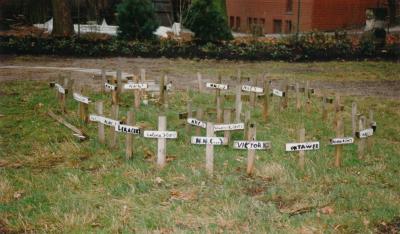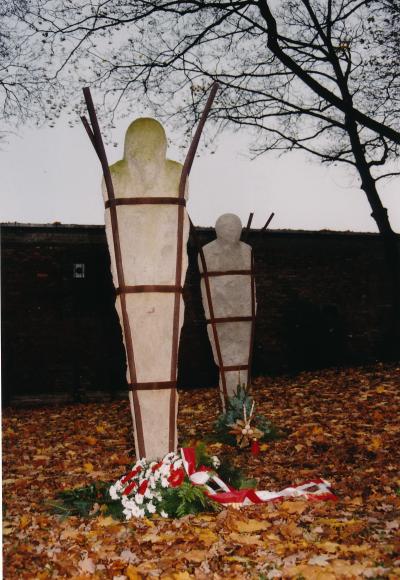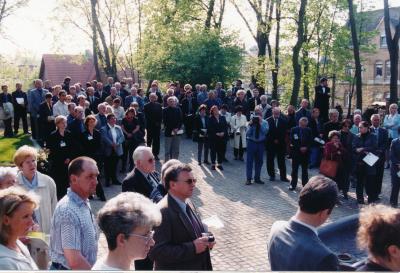Braunschweig-Hochstrasse

The plots at the cemetery were for decades neglected and left in a poor condition. Also, the knowledge about regular extermination of Polish children was suppressed in the memory of Braunschweig community. The first tidying-up works were carried out in 1994 and in consecutive years. Upon the initiative of the "Friedhof Hochstraße" group, temporary plates with information were erected there and wooden crosses were mounted on the tombs. Meanwhile, the issue of murdered newborns of forced labourer women in the so called delivery wards or in care homes gained publicity in the press. For instance, in 1998 the "Stern" weekly published a reportage in two issues, concerning the almost unknown extermination of new born children that took place in Braunschweig and about 180 other German towns during World War II.
In 2001 the "Gedenkstätte Friedhof-Hochstraße" memorial site was officially opened. The previous entrance to the cemetery was changed according to a general concept of the memorial site - a metal plate with an inscription in both German and Polish was placed where the big gate used to be. The tombs were tidied up and stone crosses with names on them were erected there.













